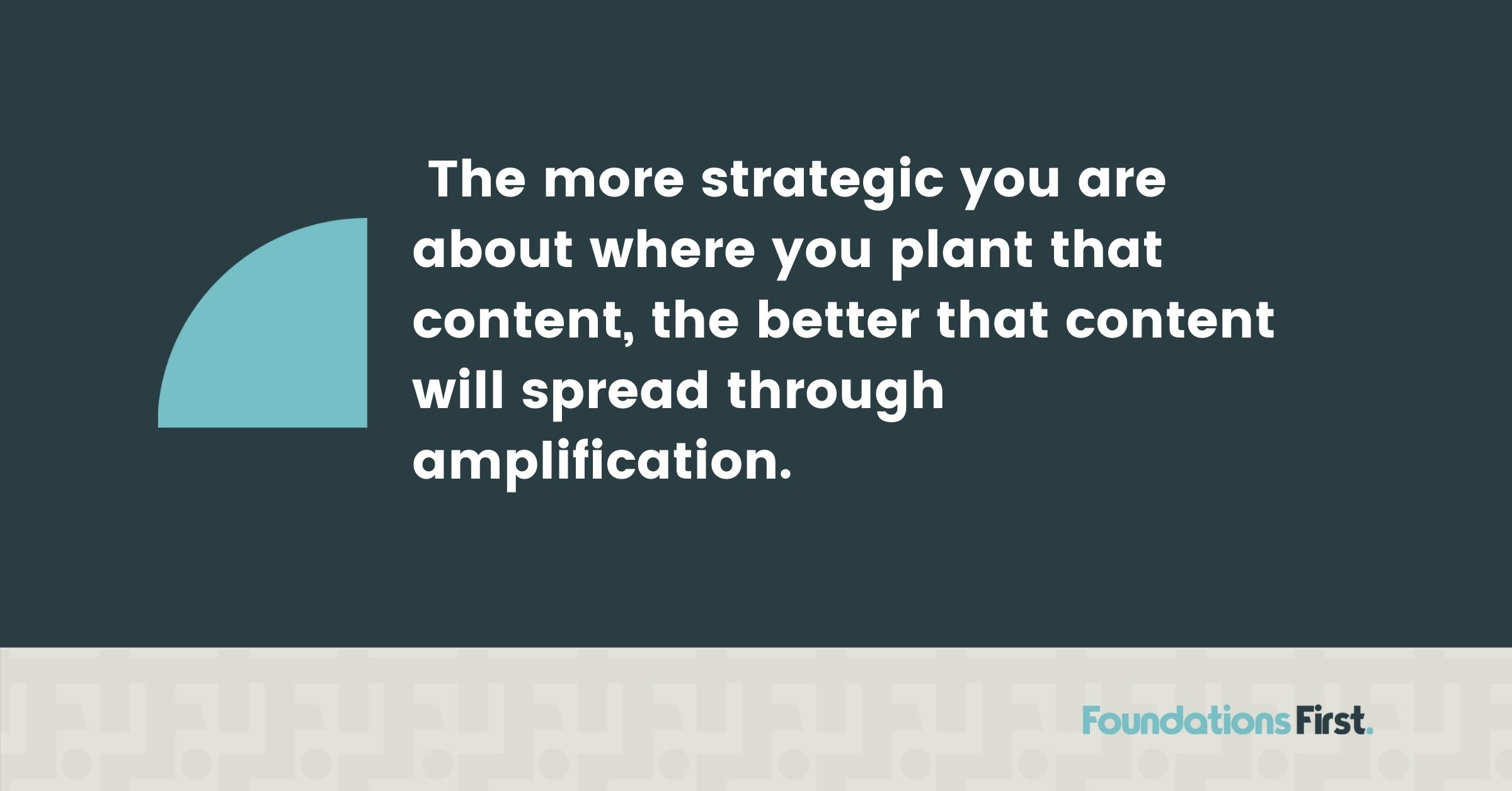10 Distribution Ideas to Increase Content Reach

It sounds simple, right? Create great content. Post it. It spreads like a multi-level marketing (MLM) business in a small western town. Creating reach isn’t that simple. Even the best content needs to be distributed and amplified, otherwise people won’t find it.
You distribute when you strategically place brand content on various digital channels, so amplifiers pick it up and share it. The more strategic you are about where you plant that content, the better that content will spread through amplification. And, amplification is important, because it helps you build brand reputation, gets your brand into “the chatter,” and boosts your SEO. Your goal is to make your content as sharable as possible. You need to distribute with amplification in mind.
Distribution for Amplification
Distributing content with amplification as a goal takes a variety of promotional strategies. Amplifying all content through organic traffic is a unicorn; know that you’ll likely need some paid efforts to nudge your content toward the right people so it can get some traction.
Are you currently focused on building brand awareness? Great, you’ll want to pay particular attention to impressions, reach, and frequency metrics. If your amplification goals are more about building customer loyalty, then you’ll be tracking metrics like audience growth rates and return visits.
Encourage employees and business affiliates to share content on social media. They’re hooked into the industry and have connections.
Reach out from the customers you have. On social media, start with those you know when branching out to new customers. “Let’s connect” email campaigns invite your customers to connect with your brand on all your social channels as well as invite friends.
Reach new potential customers. Reach new potential customers by offering valuable, no-charge information or coupons exchanged for contact info.
Publish content with a long shelf life. And then dust it off by updating the content when the market or public conversation provides a more generative context.
Code tweets into blog post. Create one-click sharing of tweetable phrases from site content. This provides an easy way to integrate social media deeper into site content and share your best content snippets without a lot of fuss. What’s a tweetable snippet? It is an eye-catching original, catchy, insightful sentence that stands out from the copy.
Maximize your emails. Typically email campaigns are used to encourage a social following. Social media networks also can be used to re-target email recipients, reinforcing an email message. Using this strategy can work well with an accounts-based marketing (ABM) strategy. Again, you want a consistent message across networks, so keep it consistent on all channels to move prospects and customers in the same direction (through the pipeline).
Gain insight for SEO and PPC. Social media networks act as trend-setters, especially for new verbiage and keywords. Social media conversations tend to use common language, which is helpful for SEO and semantic search and long-tail keyword research. Sometimes unusual phrases or acronyms are discovered on social media that then do well via SEO or PPC.
Cross-promote with a partner brand or cause. Provided you have complementary products/services and the same target markets, you can expand through one another’s social channels. By doing so, you can gain a credible introduction to a new audience. Cross-promoters might be influencers, local businesses, or even nonprofit organizations that work on issues with which your brand identifies.
Embark on an influencer strategy. When embarking on an influencer strategy, it’s important to identify your target audience, set a budget, and establish key performance indicators (KPIs). Yet finding the right influencer is no small task. Start by setting influencer goals the way you did when you applied for college: figure out who are reach influencers, match influencers, and safe influencers. Spend the bulk of your efforts on match influencers, shoot for reach influencers, and ensure you court safe influencers.
Distributing content for maximum amplification ultimately needs to be a part of an overall content marketing strategy. That takes getting all parties, decision makers, and silos on board. Data can take a disparate web of silos and focus them around a cohesive strategy.
Cindy Powell
Categories
- Analytics and Measurement
- Brand Messaging
- Competitor Analysis
- Content Marketing
- Digital Marketing Strategy
- Digital PR & Events
- Marketing Budgets
- Marketing KPIs
- Marketing News
- Marketing Rock Samples
- Marketing Staffing & Vendors
- Marketing Strategy
- Marketing Tech Stack
- Podcast
- Product Marketing
- Sales Marketing Alignment
- SEO
- Social Media
- Strategic Marketing Partnerships
- Target Markets
- Uncategorized
- Vision & Purpose
- Webmaster








